The Hi-Matic E (previously also reviewed by Hamish here) is a Minolta rangefinder with a Rokkor lens. The lens is a 40 mm f/1.7 lens of six elements in four groups. The same specification has been used in other much sought after Minolta rangefinder cameras, like the Hi-Matic 7sii.
The Minolta Hi-Matics have history. John Glenn took a rebranded (and highly modified) Hi-Matic into space. That said, the Hi-Matic E is an odd camera. Caught in an eddy; it has ‘quirks’.
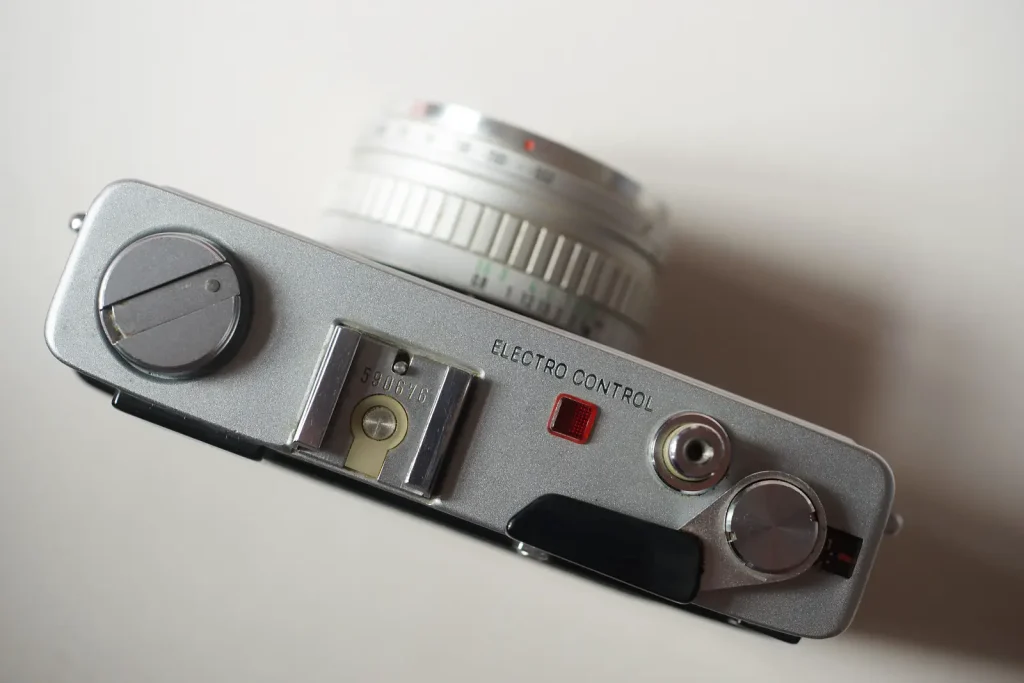
Program exposure
Although it sports a fast lens, it only has programmed automatic exposure (plus flashmatic exposure). I’m a keen advocate of programmed exposure with cameras of this type, featuring relatively wide lenses where focus differentiation is not a key feature.
However, program exposure is unusual in cameras with lenses this fast. The other fast lens/program exposure camera that I’ve used is the Olympus 35 SPn. The Olympus offers the fallback of manual exposure to get the most out of the lens. The Hi-matic E has no manual fallback.
Off-centre design
There are a few other ‘oddities’. The hot shoe is offset from the centre of the lens; this is no biggie. The tripod bush, which has to make room for the large battery cover is also dramatically displaced. This is of more concern.
Ergonomics
Although the back unlatches by lifting the rewind crank, it springs back down and does not lift far enough to load a cassette. Loading is via a sizable cut-out in the base. It is an odd half-way-house of a solution to film loading which, combined with the positioning of the tripod bush, it makes it quite difficult to change films while the camera is on a tripod.
The film speed setting ring is around the edge of the lens, where you might expect a shutter speed or aperture ring. This is convenient for exposure compensation, but it is vulnerable to getting knocked off the proper value by mistake. ASA range is 25-500.
The throw of the focusing ring is short (about 45°) and there is no focusing tab. The distance scale is on a band secured to the focusing ring by a set of screws on the underside of the ring. This is quite reminicent of the ‘new’ Canonet 28).
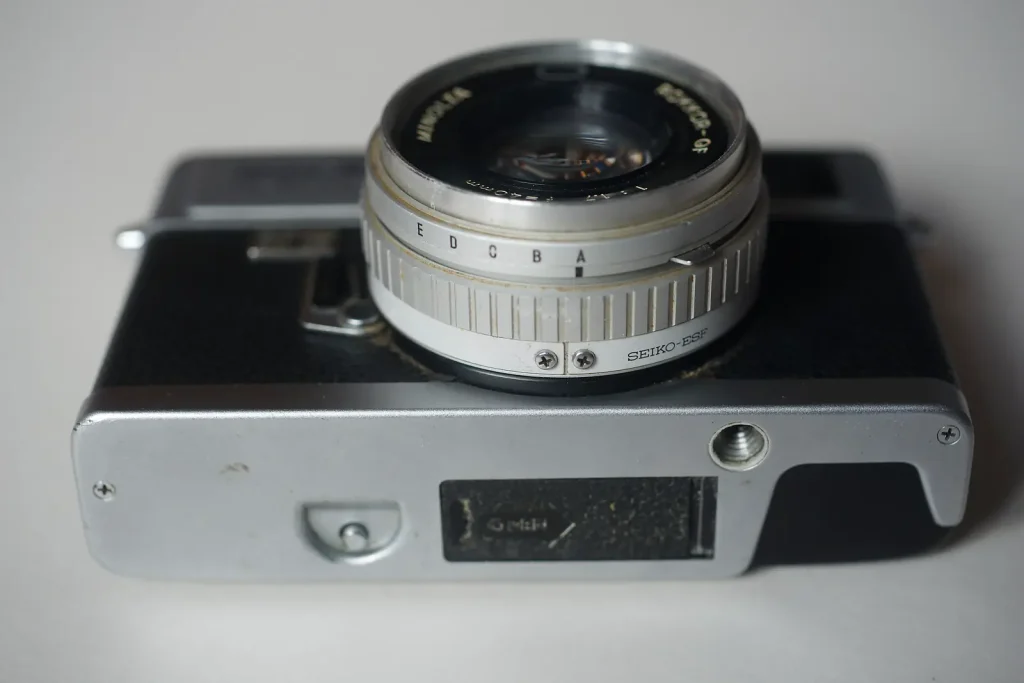
The shutter
Following on from the Minolta Electro Shot of 1965, this and the Minolta Hi Matic F use a Seiko electronic shutter. All three cameras feature a little ‘Atom’ badge to indicate that the camera is ‘Electronic’.
The Seiko ESF shutter can manage exposures as short of 1/1000, but it should be noted that this is less spectacular than it sounds for a programmed exposure camera, as the combined shutter/aperture blades only need form a relatively small aperture for that brief exposure.
Viewfinder
On the cameras that used the Seiko electronic shutters you tend to get the same viewfinder indicators – red/green lamps in the viewfinder and on the top-plate to indicate whether exposure is above or below 1/30. I’m guessing these came as part of the ‘kit’ from Seiko.
In a nice touch, the Hi Matic does feature frame lines that move as you focus closer, automatically correcting for parallax.
The rangefinder patch is a diamond in the centre of the viewfinder and works quite well.
Power
The electronic nature of the shutter leads is probably why they went for a bigger battery. The RM-640 mercury battery gave the same voltage as a PX675, but was twice the depth with more capacity. The Hi Matic E camera originally took two RM-640 batteries, side-by-side under a large battery flap on the camera base.
The original batteries are unavailable, but there is a work-around. Bridge one side of the battery compartment with something conductive and put a pair of SR44 batteries, or a single CR1/3N Lithium battery in the vacant spot. Either will give you 3v – which is close to the original.
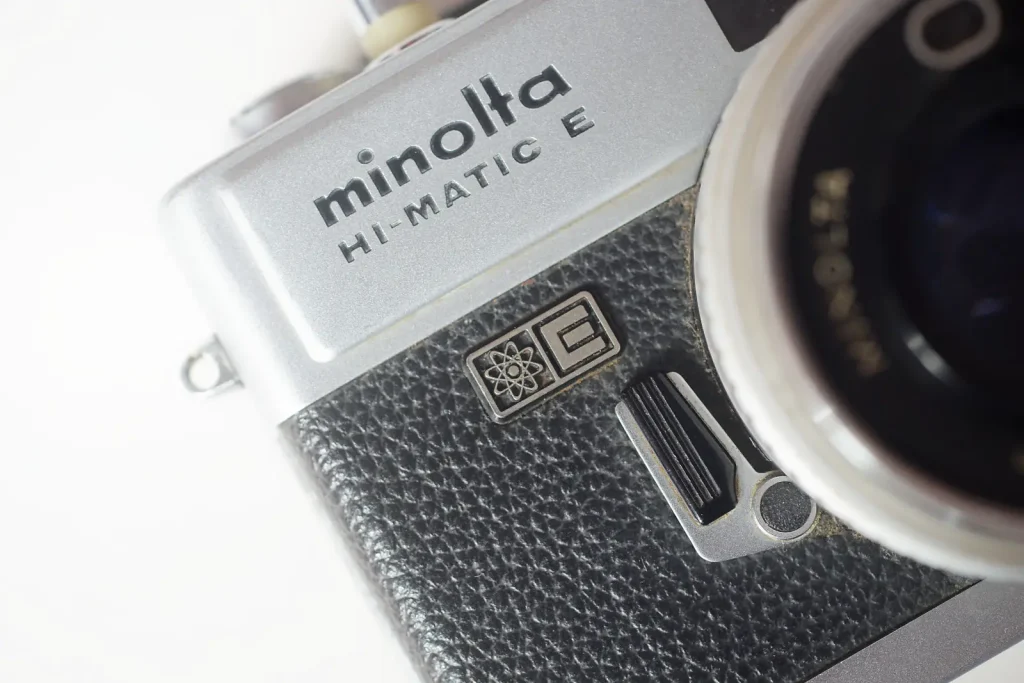
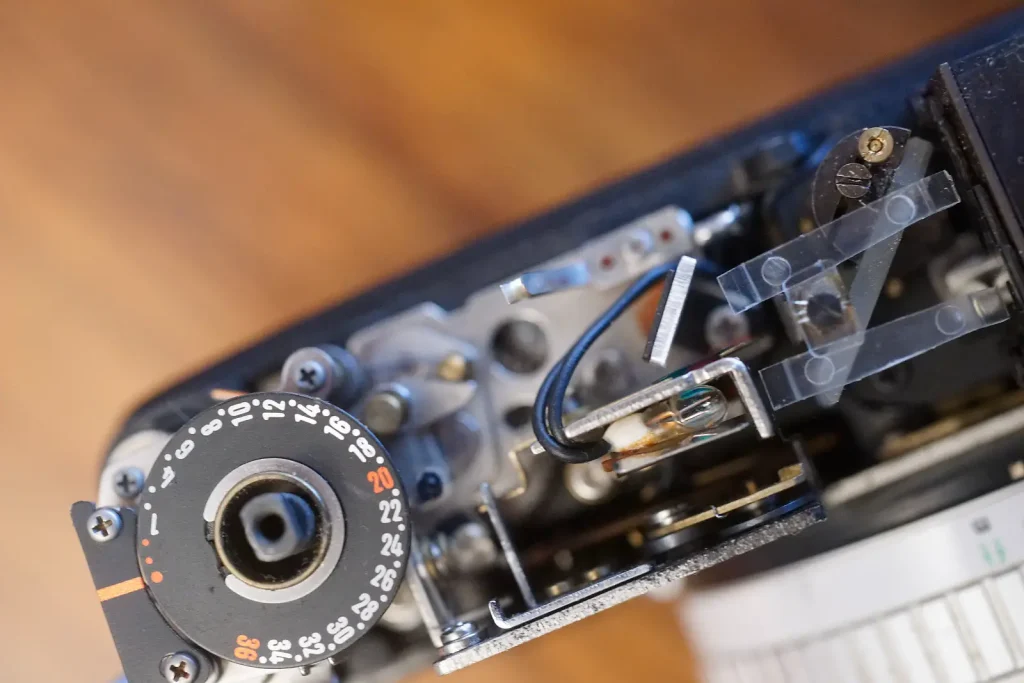
Second thoughts?
A year passed between the release on the Hi-Matic E and the follow-up ‘budget’ Hi-Matic F. In that year someone seems to have been looking at the E in comparison to the competition and producing a bit of a redesign. The F is not just an E with a slower lens and no self timer.
For a start the body of the F is noticeably smaller. Remarkably similar to the later (and highly regarded) Hi-Matic 7sii.
In addition, it has:
- A centred hot shoe
- A rewind knob that raises higher for film loading, with no cut-out in the camera base-plate
- A tripod bush that is located more centrally on the other side of the battery compartment
- A focusing tab
- An ASA dial that sits inside the filter ring where it is less likely to get knocked (but where it is less useful for exposure compensation)
- A simplified guide number setting system
- A battery check button separate from the shutter release
- A shutter release with shallower travel
- A 38 mm f/2.7 lens – managing to be as wide, and a touch faster than the competition.
- In line with the ‘budget’ treatment, it loses the self-timer and the parallax-correcting frame lines.
On the whole, the F seems a much more modern camera than the E.
The Hi-Matic E in use
In use the Hi-Matic E has a heavy-ish shutter release, but the button is broad and the pressure required is reasonably comfortable. The camera seems to function fine with a single three volt CR1/3N battery – in fact It has produced some of the best exposed negatives I’ve seen from a camera of this vintage.
The rangefinder patch is clear and well aligned. The shutter is so quiet that you worry whether the camera is actually working. The extra stop-and-a-bit that the f/1.7 lens brings means that the camera simply does not give up in low light. When the shutter speed does slip below 1/30, the camera warns you, but doesn’t prevent you from taking a shot. This is in line with my preference. Nothing is as annoying as choosing the decisive moment only for the camera to refuse to co-operate. You can do something about under exposure. If the exposure is not made, you have nothing.
Pictures!
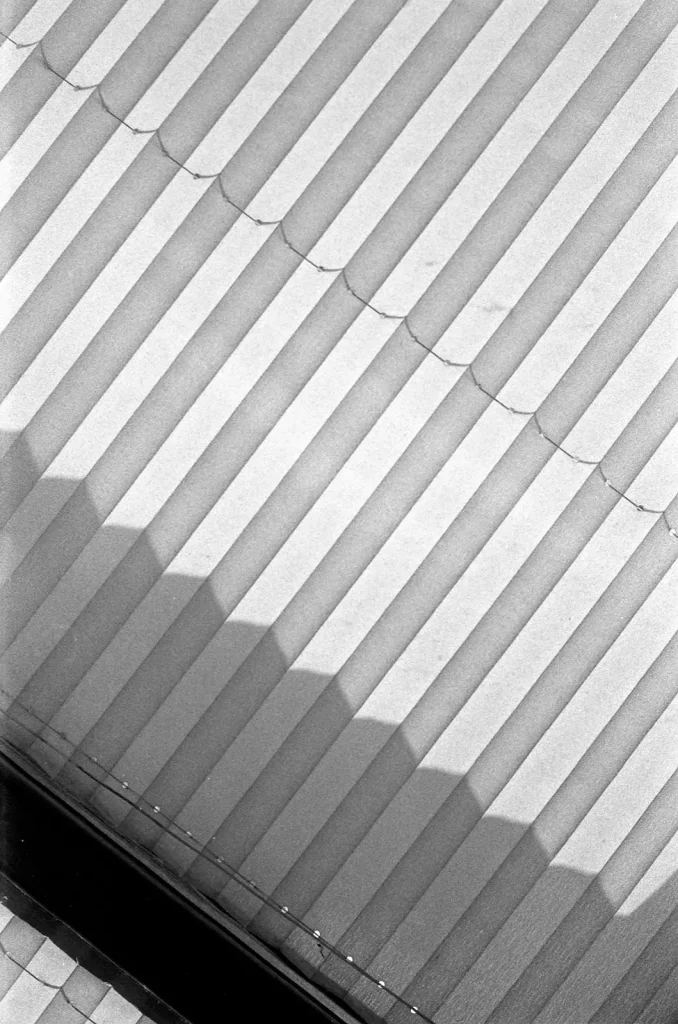
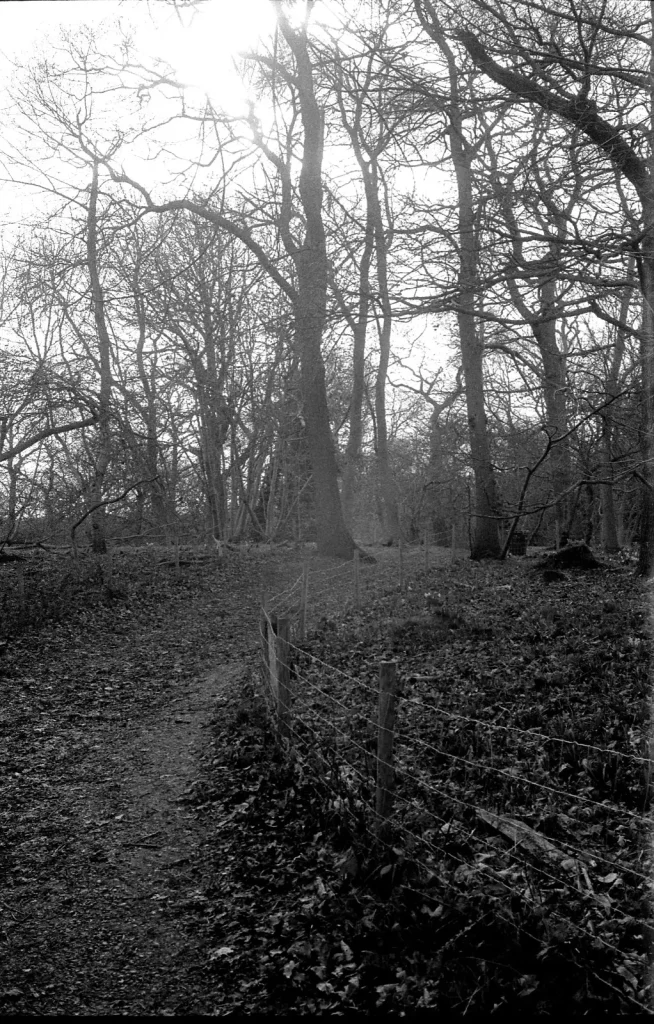
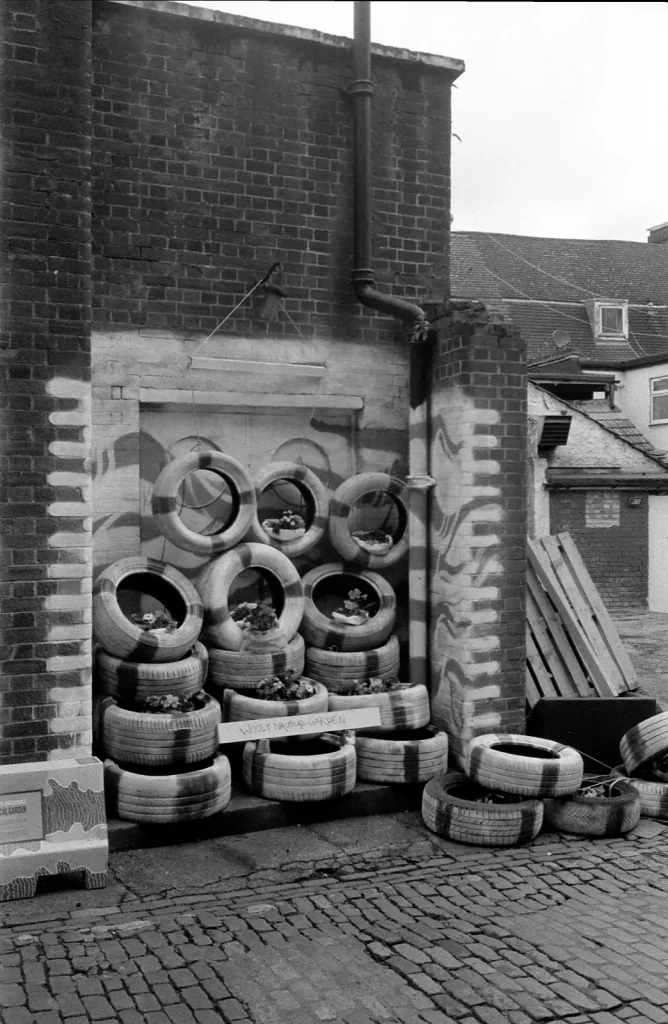

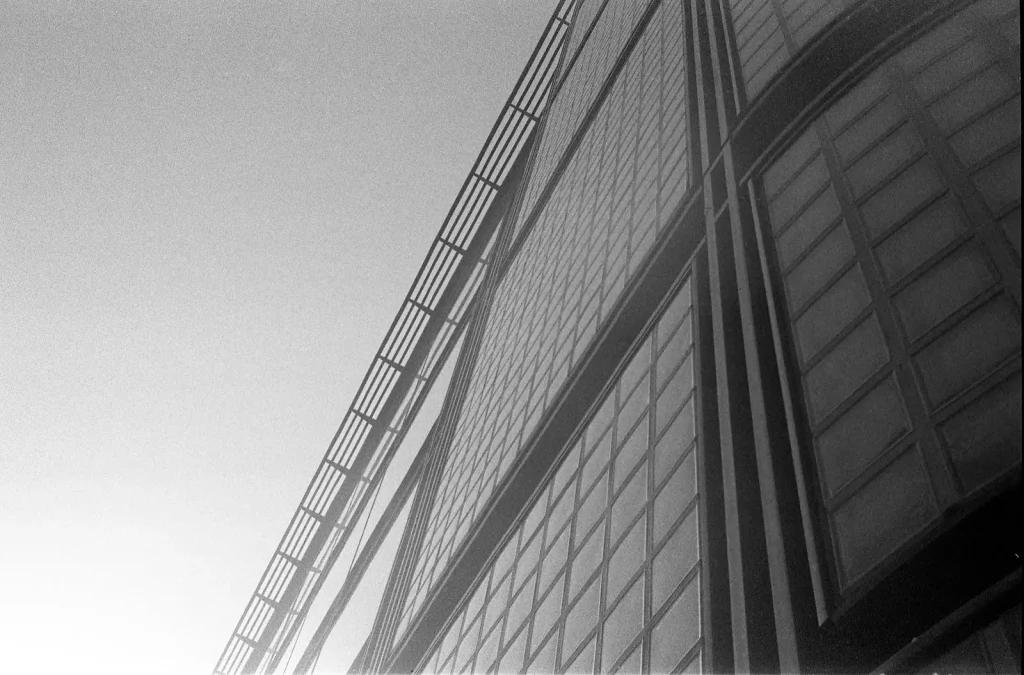
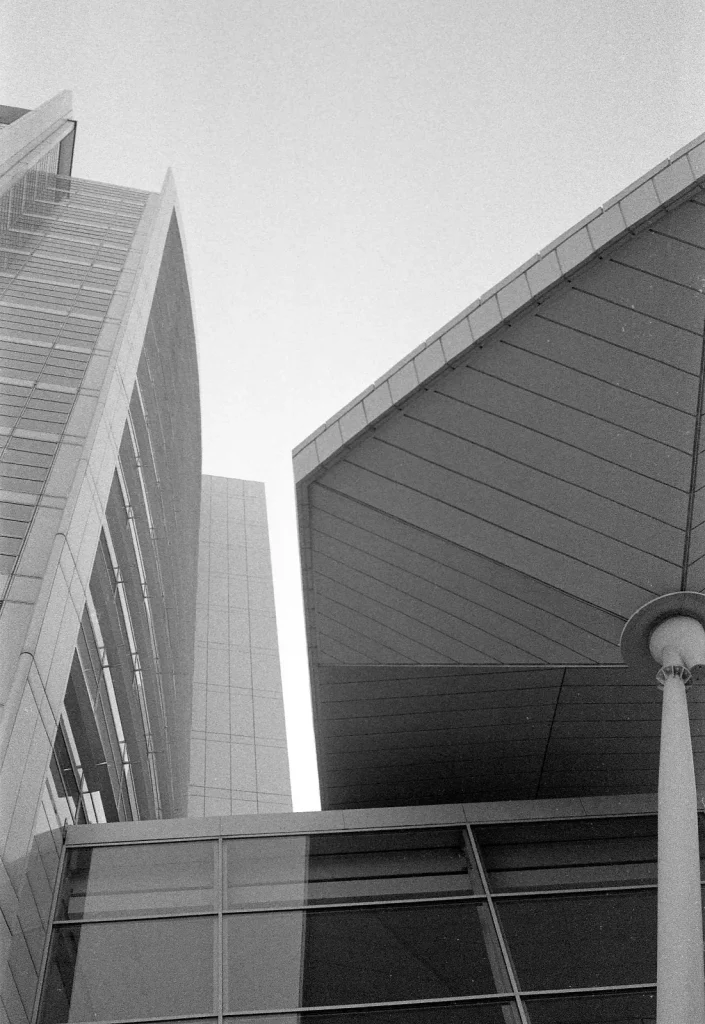
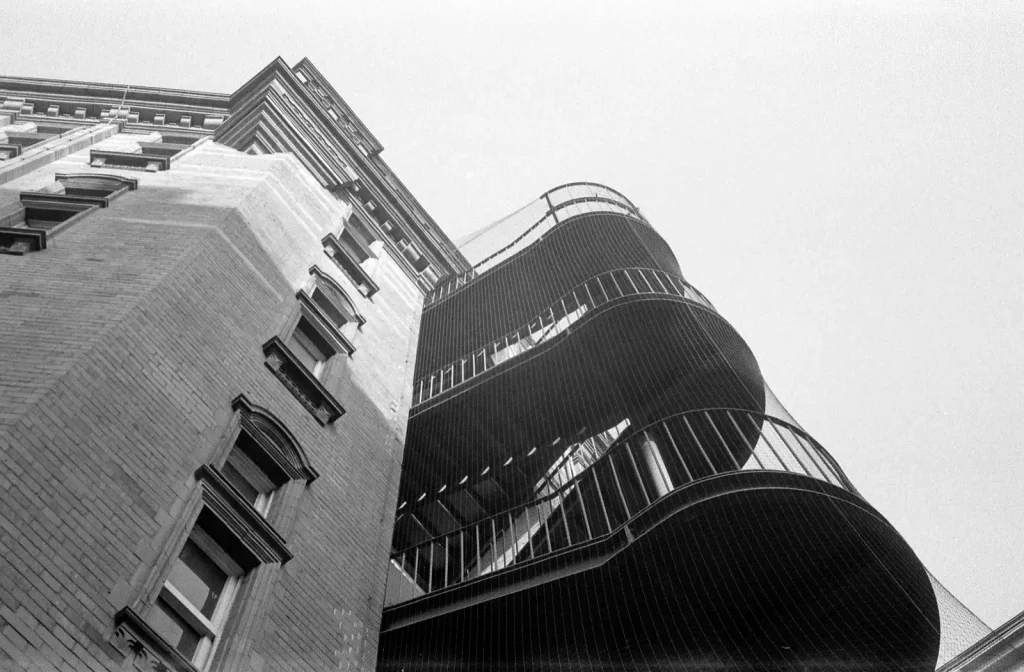
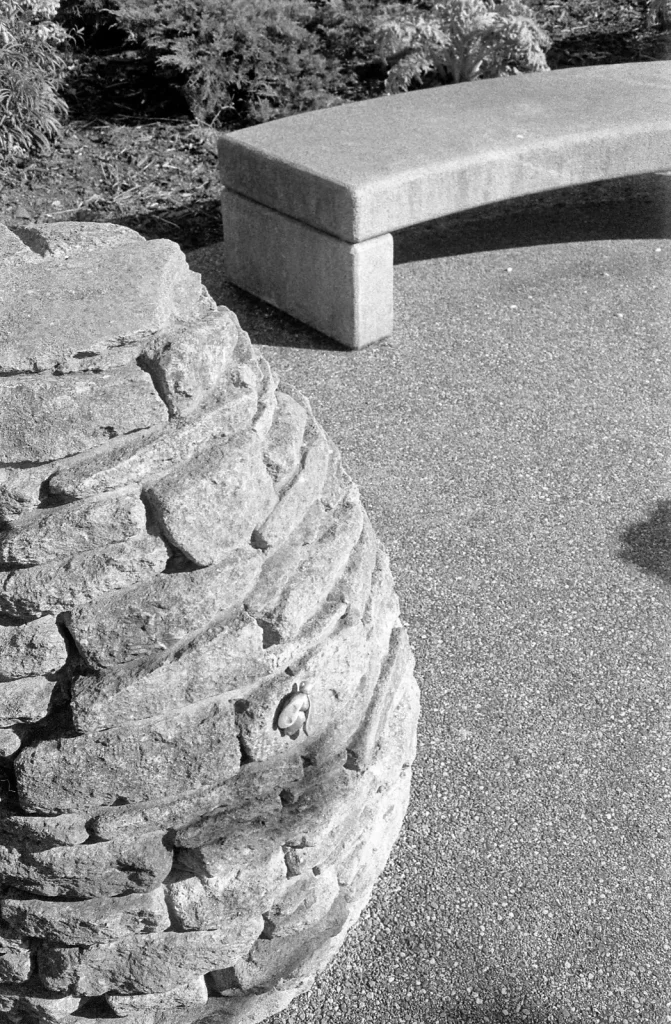
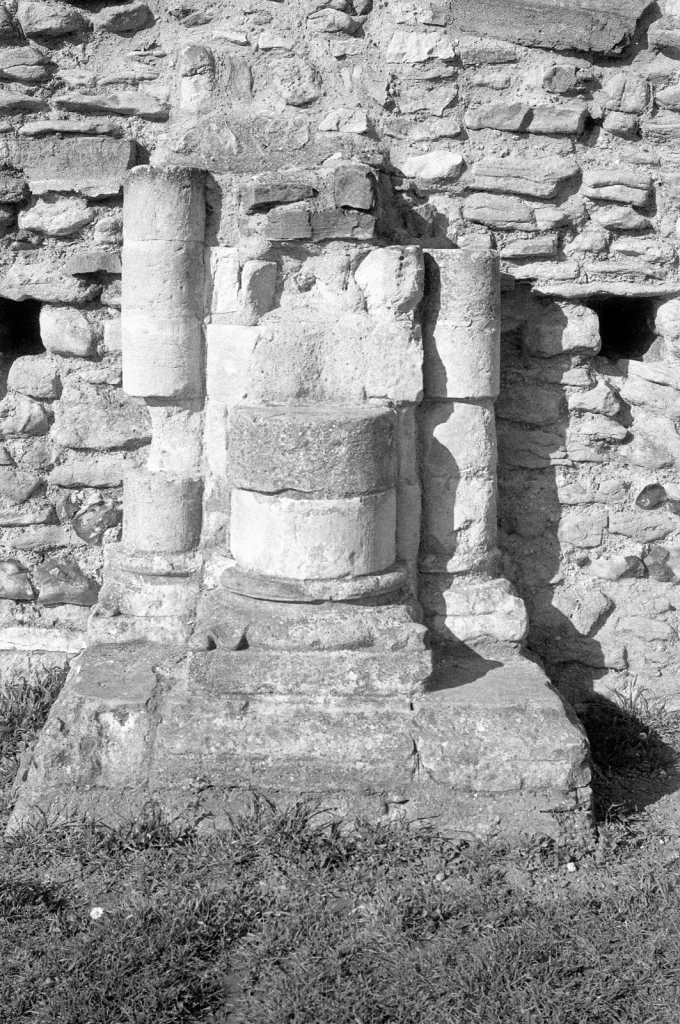
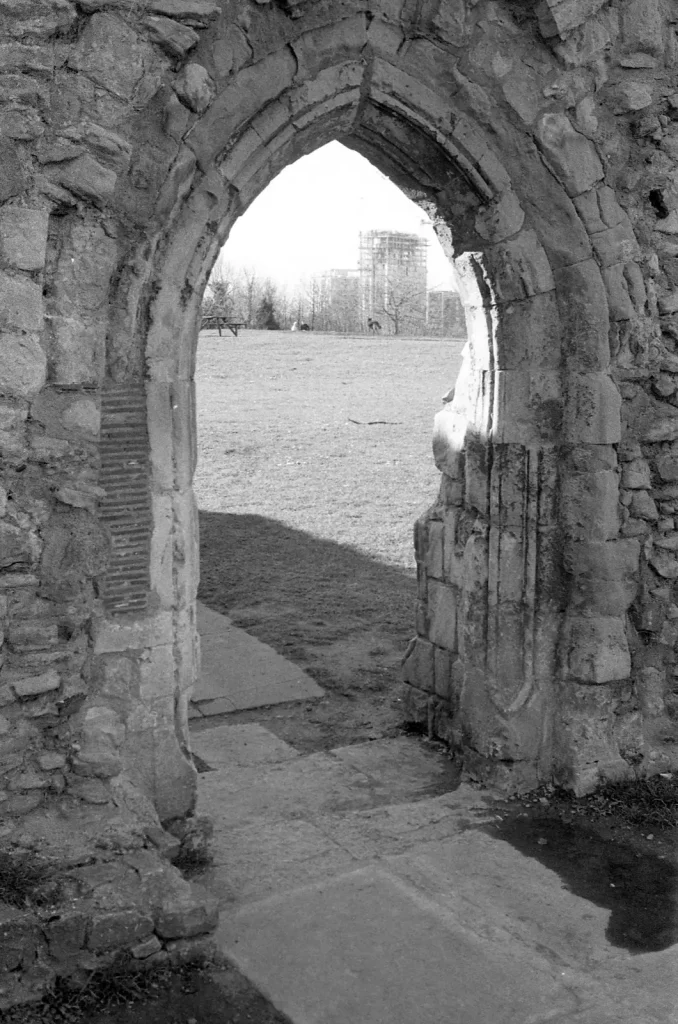
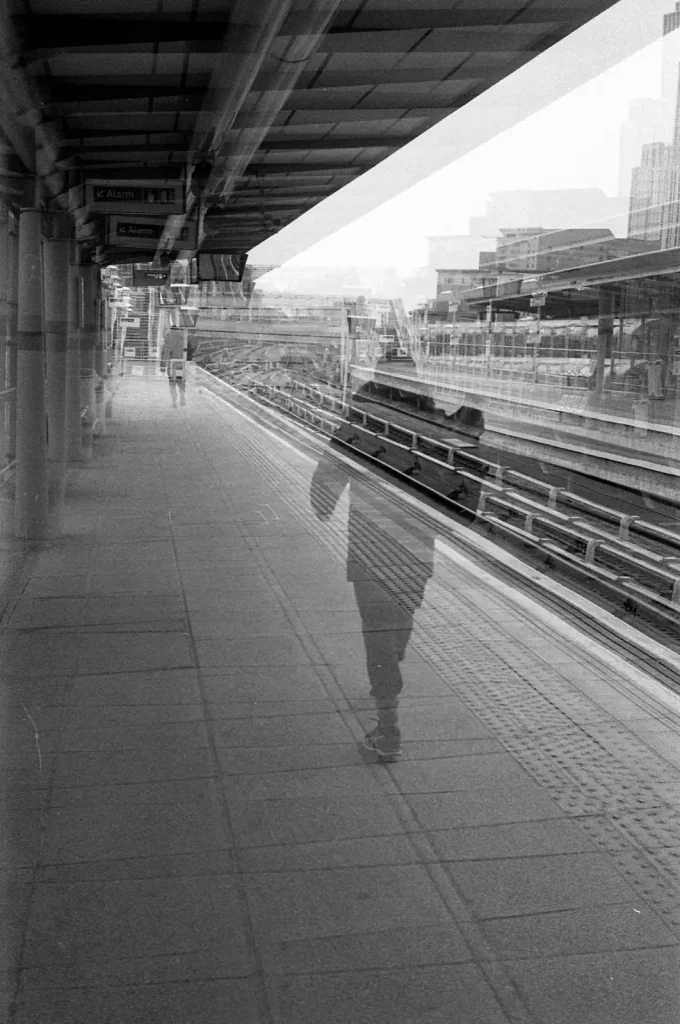
Conclusion
So this is a not particularity small, slightly old-fasioned 35mm camera with a fast lens that also turns up on other Minolta branded compacts, but which lacks any form of exposure control other than altering the ISO. It also was built for a battery that is no longer available and only takes film up to ISO 500. You are left with the feeling that it should have been far better thought through and laid out.
So is it a dud?
No, far from it. I would not choose to use it with a tripod, but the same could be said for pretty much every 35mm rangefinder compact. It may not be sexy, but it produces great exposures. It is comfortable to use, easy to focus and its exposure system seems reliable. The shutter is so quiet that you will worry all the way through the first film, but it really is discrete. The lens is not the widest, but it is a pretty good ‘normal’ focal length for the film format.
It is a solid and practical little(ish) camera. Like a ‘diificult’ second album, it grows on you over time.
Share this post:
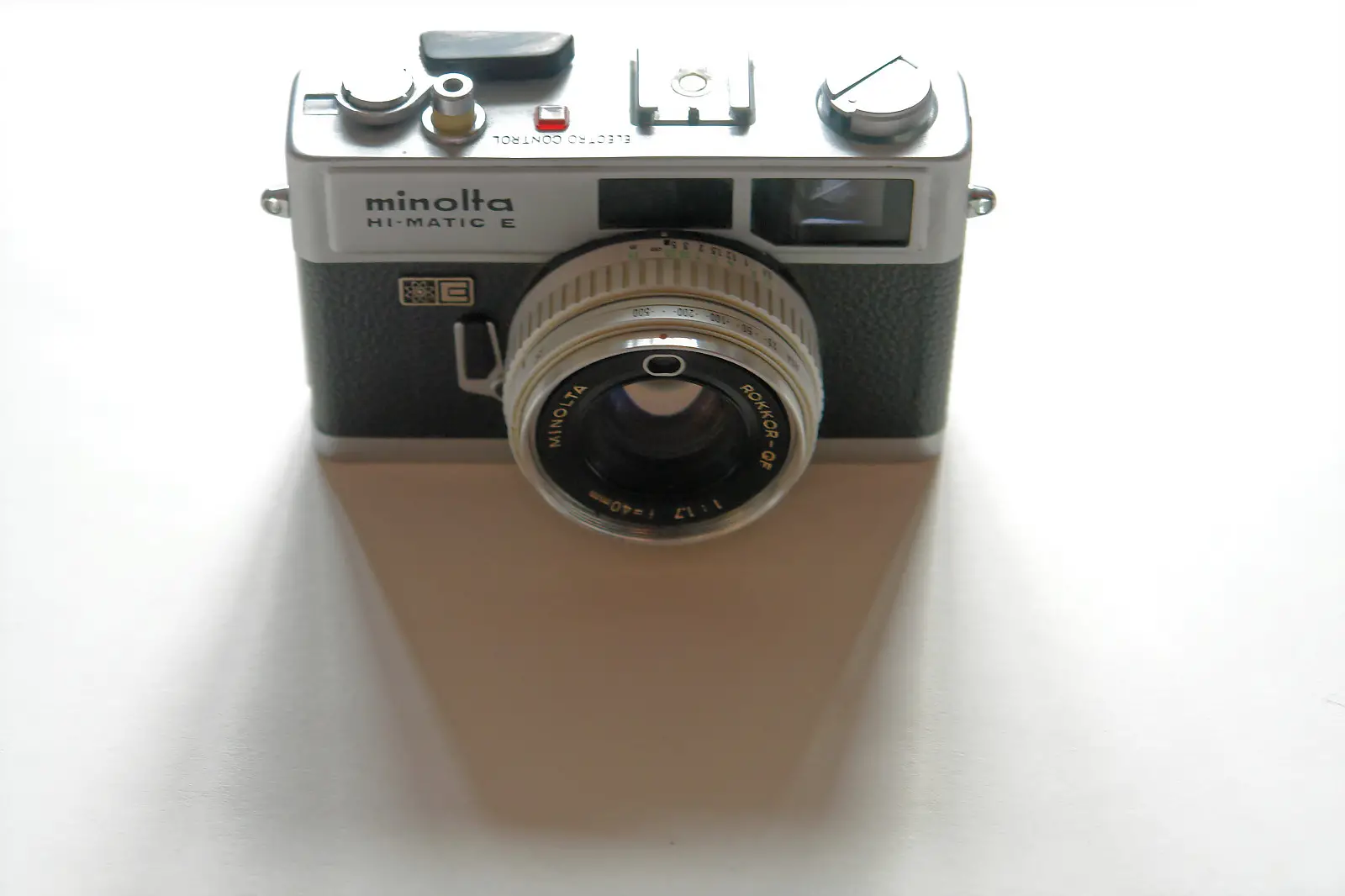



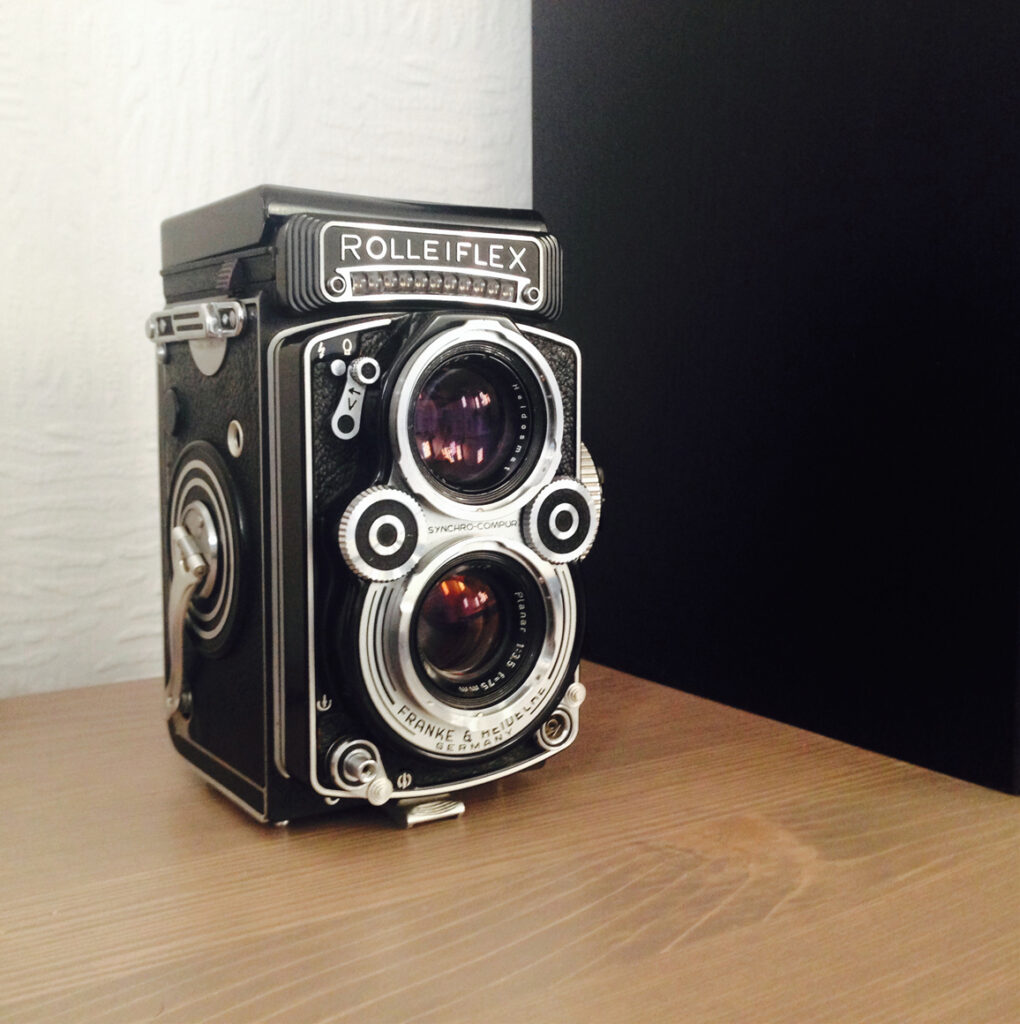




Comments
Robert Kapp on Minolta Hi-Matic E – Minolta’s ‘Difficult’ Second Electro Camera – By Bob Janes
Comment posted: 09/11/2023
nice Article about the "E".
Lookin at one right now in Black for a reasonable price but i already have the F version and am pretty happy with it.
But it looks so cool in Black :D.
Cheers
Rob